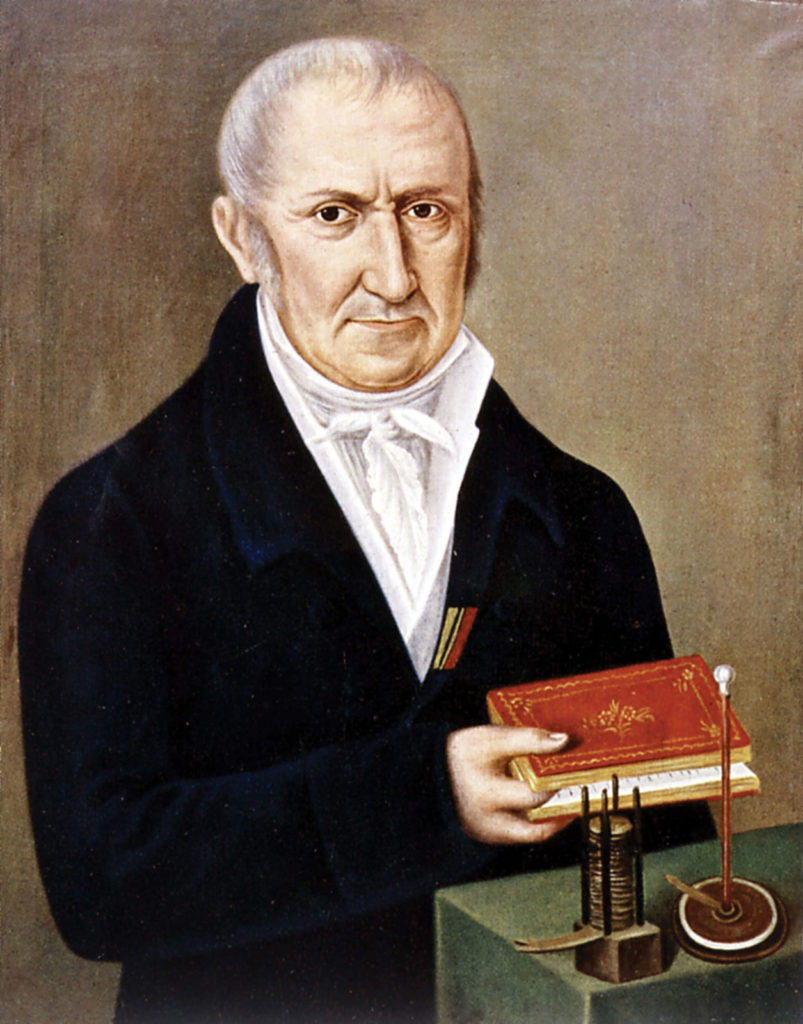
Alessandro Volta (1745 – 1827) was an Italian physicist and chemist who was a pioneer in electricity. He is best known for inventing the battery, which was the first artificial source of continuous electrical current.
Volta was born in Como, Italy, was educated first at home and then at a Jesuit school. He became interested in electricity at an early age and began publishing papers on the topic in his early twenties. By 1774 he had became a professor of physics at the Royal School in Como. One of his first major accomplishments was the discovery and isolation of methane gas.
In 1791 his friend Luigi Galvani published his views of animal electricity, a form of electricity Galvani believed to be generated in the bodies of animals which would flow through the nerves, causing muscles to move. Galvani experiments showed that when two different metals came into contact with a dead frog, the frogs muscles would twitch. Volta disagreed with Galvani on his animal electricity hypothesis as he believed that it was the through the contact of two dissimilar metals that caused the electric current to flow. In an attempt to prove this Volta built what he called the Voltaic pile, the first ever electric battery.
The Voltaic pile provided a powerful too for other scientists to made additional observations and discoveries in the field of electricity. It was easy enough for anyone to make. Within weeks it was used to dissolve water into hydrogen and oxygen and within a few years newer and more powerful batteries were being created and used to isolate new chemical substances.
In 1791 Volta was already deemed an expert in electricity and he was elected to be a Fellow of the Royal Society. Impressed by his battery and work on electricity, Napoleon Bonaparte made him a Count in 1809. Volta died in 1827 but his legacy would live on. In 1881 in recognition of his fantastic contributions to electrical science the term volt would be the official SI unit of electric potential.